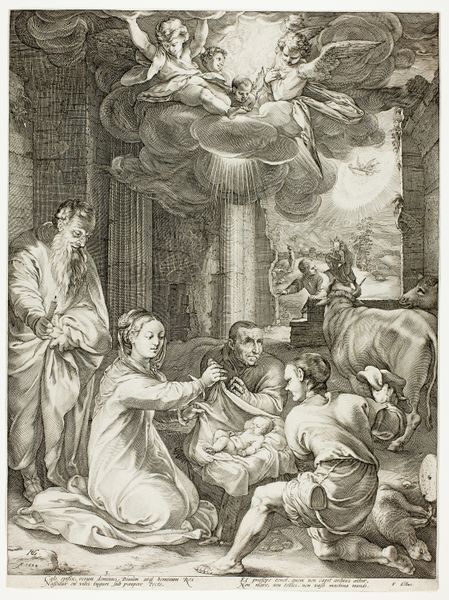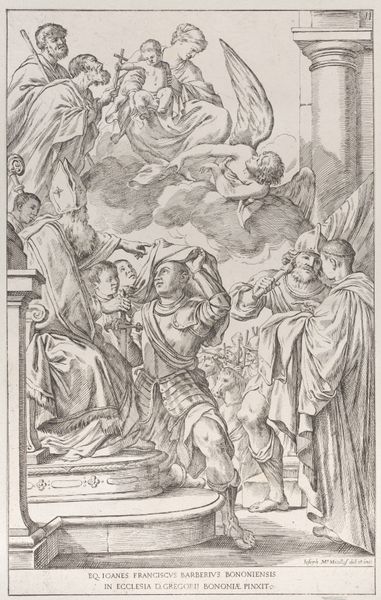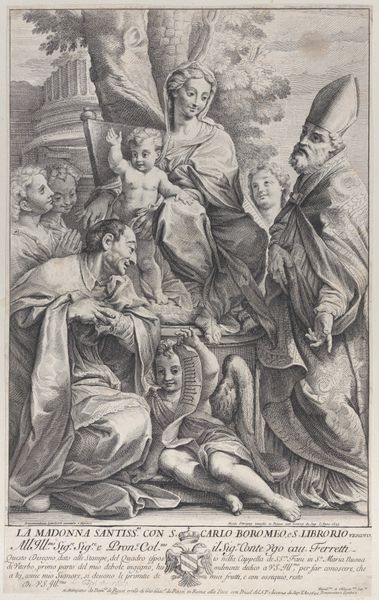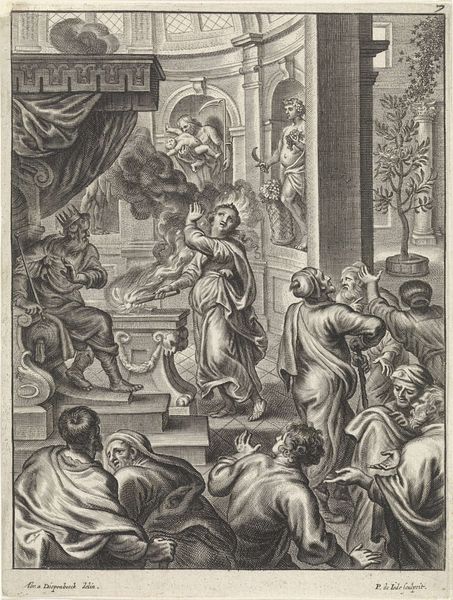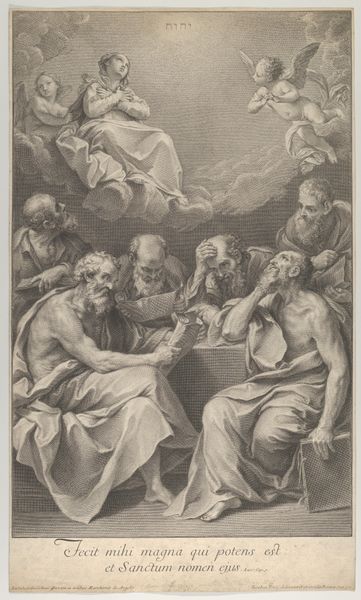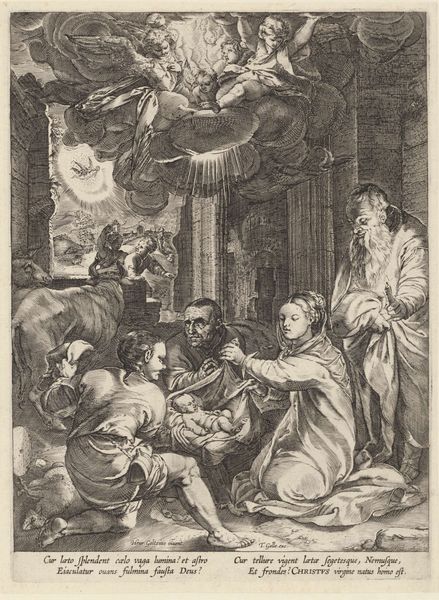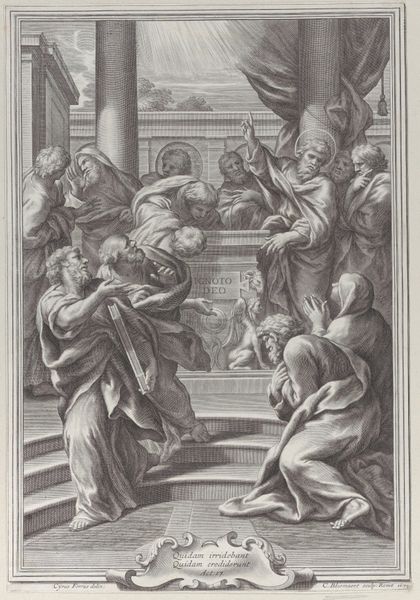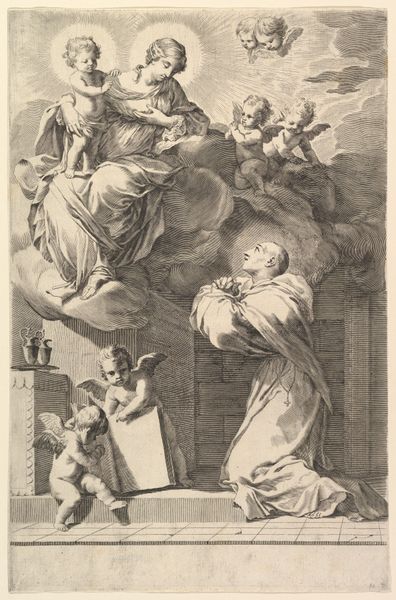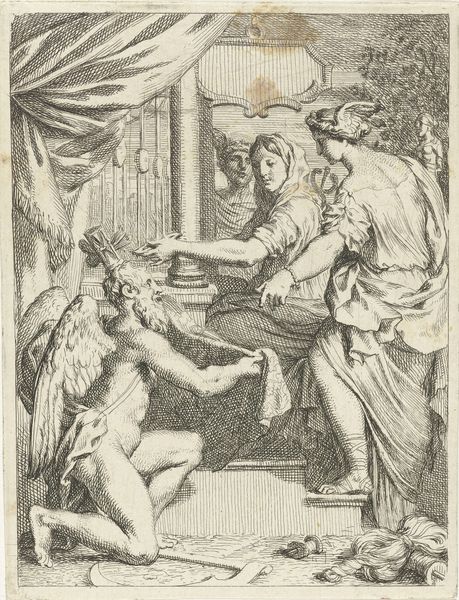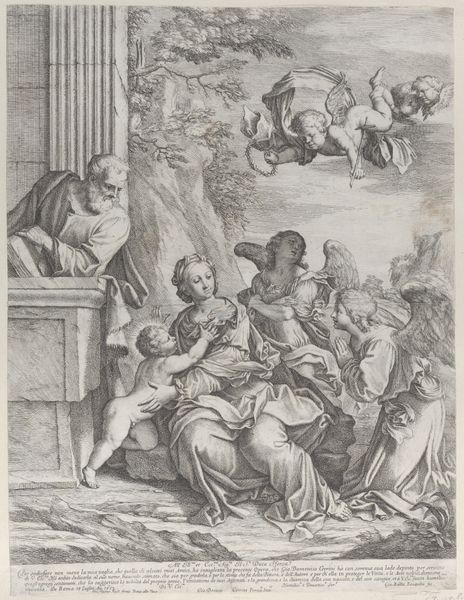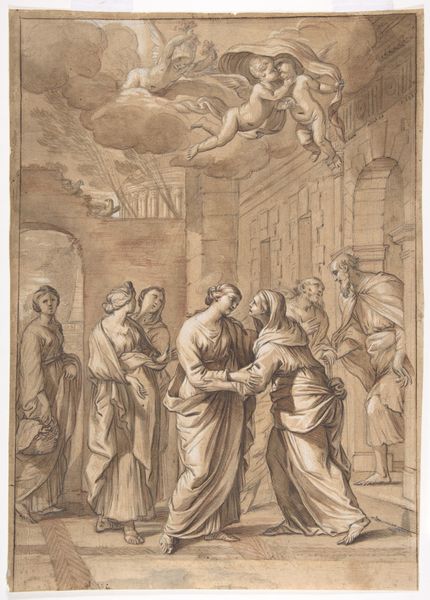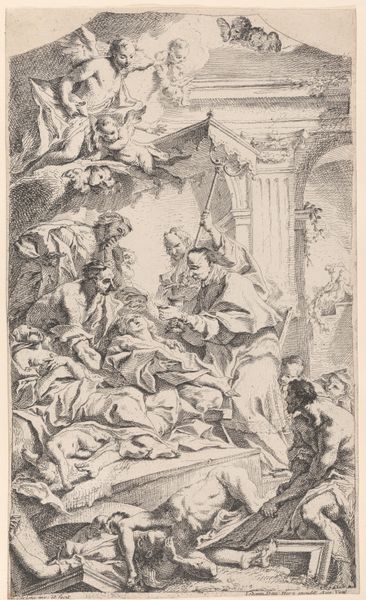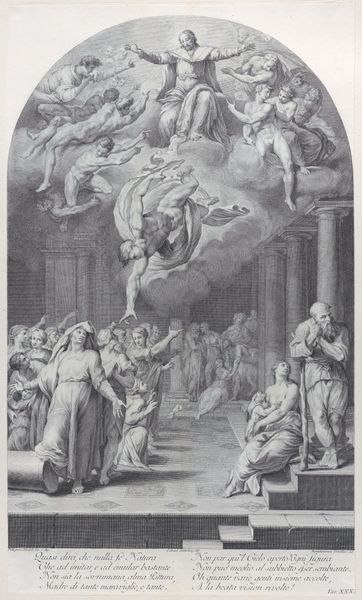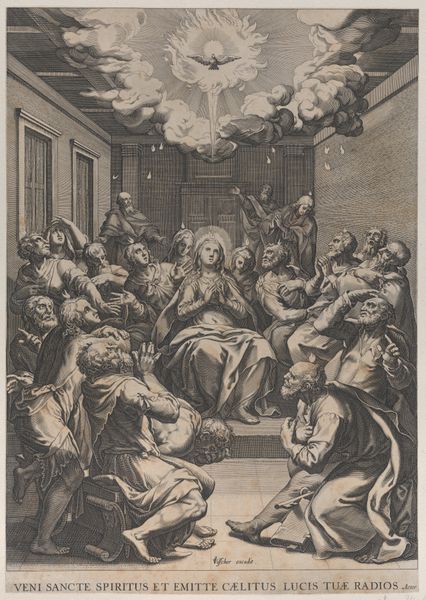
print, engraving
# print
#
figuration
#
line
#
history-painting
#
northern-renaissance
#
engraving
Dimensions: 470 mm (height) x 350 mm (width) (bladmaal)
Curator: This is Hendrick Goltzius' "The Adoration of the Shepherds," an engraving dating back to 1594. Notice how he uses the line to create texture and form. What strikes you most about it? Editor: First, the light! It just pours down like a stage spotlight, making the whole scene feel simultaneously holy and theatrical. And those angels look like they’re having the time of their lives floating on those puffy clouds. Curator: The dramatic lighting is characteristic of the era and this particular subject matter. Goltzius lived and worked in the Netherlands during a period marked by considerable religious and political upheaval. Representing such scenes served both spiritual and ideological purposes. Editor: Right, it’s not just a sweet Nativity scene. It is loaded, isn't it? The way Mary is positioned…there is this almost defiant gaze in her eyes, while she lovingly cares for Jesus! It feels very grounded, even earthy, which I dig. And is that dude holding a candle looking like he just stumbled in from a Grateful Dead concert? Curator: Well, his placement is not coincidental! Goltzius strategically employs visual cues of contrasting light and dark to evoke a sense of divinity amidst human fragility, as well as emphasize the importance of those marginalized in society, inviting reflection on class and faith. Editor: You know, it's funny how something created so long ago can still spark these questions about identity and power. The religious symbolism, the Renaissance flair. Does it feel a bit... staged? Is that just me? Curator: To frame it within current dialogues around representation and spectatorship, we can acknowledge its artificial construction and explore how it implicates both the viewed and the viewer in a web of sociopolitical relations. Goltzius challenges viewers to consider their relationship to both religious narratives and socio-political dynamics. Editor: Hmm, heavy stuff. Maybe it's less about the stage and more about realizing that even centuries ago, folks were wrestling with similar issues that haven’t gone away. Made me think—it's strange how old art can echo what's happening now, isn't it? Curator: Precisely. By examining "The Adoration of the Shepherds", one appreciates the enduring ability of art to promote critical inquiry into timeless questions of being.
Comments
No comments
Be the first to comment and join the conversation on the ultimate creative platform.
